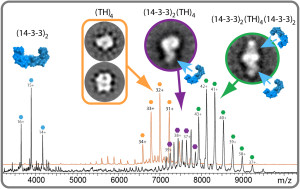
Copenhagen was hosting this years world congress of psychiatric genetics by the ISPG. Many leading experts in genetics of neuropsychiatric disorders were presenting.
Genetics has been and is playing an essential role in neuropsychiatric research. For many decades, however, we’ve been receiving hard lessons from genetics, unable to detect replicable genes and finding that our much-valued candidate genes did not live up to their expected promise (Kenneth Kendler, Virginia University).
Last year, the world congress of psychiatry focused on “redefining mental illness through genetics”. It has been noted that efficient use of combined information on neuropsychiatric conditions may provide a better target for genetic studies. Thus, merging several smaller studies around the globe into one resulted in a landmark schizophrenia genome-wide association study (GWAS) by Psychiatric Genetic Consortium (PGC) that identified 108 candidate loci (http://www.ncbi.nlm.nih.gov/pubmed/25056061).
While the hope is that increasing sample size for other neuropsychiatric disorders (autism, ADHD, bipolar disorder and major depression) will lead us into the successful footsteps of schizophrenia, this year’s world congress of psychiatry targeted the “pathways to therapy and prevention”. But where do we stand on pathology of these disorders? Are we equipped enough to pursue the therapy and prevention?
Peter Falkai of the University of Gottingen presented the clinician’s perspective, naming the genetics of drug response (pharmaco-genetics) as the most promising bridge to the clinic. Yet, it remains unclear how strong the effects and the evidence should be before we can introduce genetic tests into the practice. Falkai has also noted ethical issues in making genetic counseling routine, and the importance of communicating realistic expectations about the meaning of test results.
Kari Stefansson of deCODE genetics noted that «we are still just poking in the dark». This was echoed by Steve Hyman of the Broad Institute who characterized the latest schizophrenia GWAS as «a difficult beginning» due to the high heterogeneity in etiology of neuropsychiatric disorders, small effect sizes of signals coming out of GWAS and our inability to access the brain and the circuits involved. Pamela Sklar of Mount Sinai Medical Center pointed out that over 100 loci identified by the PGC GWAS mostly lie in non-coding regions of the genome.
So, what can we do in order to move forward? One optimistic point of the congress was the use of polygenic risk score as a new way of interrogating the genome. The polygenic risk score sums the risk contributed by each risk allele a person has across the genome. During the congress, this score was appreciated as afresh genetic dimension and was adopted to explain the variability in a number of neuropsychiatric traits: brain activity, cognitive ability and creativity. In particular, Manuel Mattheisen of Aarhus University argued that polygenic score (based on the risk alleles identified by PGC) could mediate the genetic component of schizophrenia risk presented by family history. Mattheisen noted that over 40% of the risk associated with having first-degree schizophrenia relative could be mediated by this polygenic score. Overall, this may mean that someone with a family history and a high polygenic risk score would have 10 times the risk of someone with the same family history and a low polygenic score.
As was noted by Melvin McInnis of the University of Michigan, another “new era of psychiatric genetics” would lie within induced pluripotent stem cells (iPSCs). As we are now able to rebound a mature cell into a more pliant, primeval state (create the iPSCs), it has been proposed to use this as the pulpit for testing gene functions and drug responses. John Kelsoe of the University of San Diego, for example, reported a study on lithium response in cells derived from people with bipolar disorder. Skin cells of bipolar patients had been induced into the disorder-resembling hippocampal neurons and their properties were examined. Cells from patients who are known to respond to lithium were hyper-excitable, exhibiting longer action potentials compared to the cells from controls. This hyper-excitability could be reversed by lithium in cells derived from lithium-respondent patients only, suggesting a potentially useful sub-phenotype (or new phenotype) of bipolar disorder and a model to study the mechanism of lithium response.
However, Dan Geschwind of the University of California expressed several concerns about the use of induced pluripotent stem cells. Geschwind has obtained three different iPSC lines from various labs and performed their transcription profiling. Interestingly, only one cell line revealed transcription patterns matching the postmortem human brain. In addition, the neurons were quite immature, equivalent to those found in the brain of a fetus at 24-25 weeks of gestation. The researchers were proposed to find ways of neuron maturation in vitro, which may help our modeling of processes in adult neurons possibly involved in mental illness.
Moving away from what could be perceived as a stationary, cross-sectional analyses, Michael Meaney of McGill University conveyed the concept of neuropsychiatric disorders essentially being “a process of adaptation between the individual’s genome and the context within which the development occurs”. Adaptation to all kind of forces has an impact on our traits, and that impact at a particular period of development is then could be sustained over the lifespan of an individual. Epigenetics (heritable gene expression patterns that are not caused by changes in DNA sequence) can be an explanation on how the adaptation during development persists in its ability to shape the phenotype over the course of a life span. Meaney provided first evidence for the epigenetic regulation of the glucocorticoid system by maternal care in animal models. In humans, genome-wide analyses of the epigenome revealed effects of parental care on some psychiatric traits. Moreover, individual’s epigenetic response to its environment appears to be moderated by his/her genotype: for example, BDNF gene may mediate maternal influences on the human epigenome. Meaney has also presented the molecular mechanisms by which the maternal care alters gene expression and the subsequent effect on neuronal growth, function and health, highlighting that changes in epigenome consolidate rather than drive the shifts in gene expression.
In line with Meaney’s work, Beate St.Pourcain of Bristol University presented an intriguing study on how our genome may interact with environment only at certain stages of our lives. St.Pourcain examined the risk effect of maternal smoking on development of social communication skills in children and teenagers. It was noted that this gene x environment interaction was the strongest at the age of 8 years and decreased with age. In addition, an increase in non-additive genetic effects for social communication was revealed during late childhood/puberty stage, but not during later development.
Thus, the importance of realization that neuropsychiatric disorders arise in a fine-tuned system of many inter-wind structures is becoming increasingly clear. We may never be able to detangle and identify each and every single variant behind a neuropsychiatric disorder, but we may be able to pinpoint the functional pathways of interest, uncover their intricacies and dynamic nature, which, eventually, will lead us to our goal of therapy and prevention.
Such ideas were supported by many encouraging studies presented during the congress. Going back to the talk of Dan Geschwind, one may note the conceptual value in his functional organization of the brain transcriptome. Although a standard brain gene-by-gene expression profiling was first applied over 10 years ago, looking at the genes whose expression co-varied the most with other genes, displaying greater connectedness is the novel kind of network analysis and may help distill the complexity of expression patterns of thousands of genes into something more tractable. In fact, Geschwind was the first to show convergence among different subtypes of autism on a molecular level. This observation of convergent biology in autism is striking as now “despite autism being a heterogeneous and complex disorder, we can capitalize on genetic findings and system biology approaches to identify common molecular pathways”. In addition, Geschwind has also offered a molecular view on recent outcomes of genetic studies revealing the involvement of brain wiring as crucial element in the patho-mechanisms underlying several neuropsychiatric conditions. Presented analyses linked autism specific pathways to cortical-cortical disruptions bridging intra- and inter-hemispheric networks. This is the first time we can see systematic connection between genes disrupted in autism and cortex circuits. Such cortical-cortical connectivity model can be a valuable phenotype in creating and assessing models of autism.
With more mature molecular and statistical methods, finding genes that are up- or down-regulated in a neuropsychiatric condition may help us narrow down the most important mechanisms and help us to fight our way through what Stephan Ripke of Broad Institute called a “jungle of findings”. Ultimately, genetic studies revel that neuropsychiatric conditions appear to essentially be the outcome of nervous system’s development and adaptation process. There seem to be a common pattern of gene-expression changes during neocortical development, reflecting convergent biological processes behind major neuro-psychiatric conditions. A systems-level understanding of what distinguishes a brain with neuro-psychiatric condition from other brains could hasten the discovery of new, more widely effective treatments since the risk for the disorder may be conferred by the properties of the pathway and not singular variants.
by Tetyana Zayats (researcher)







